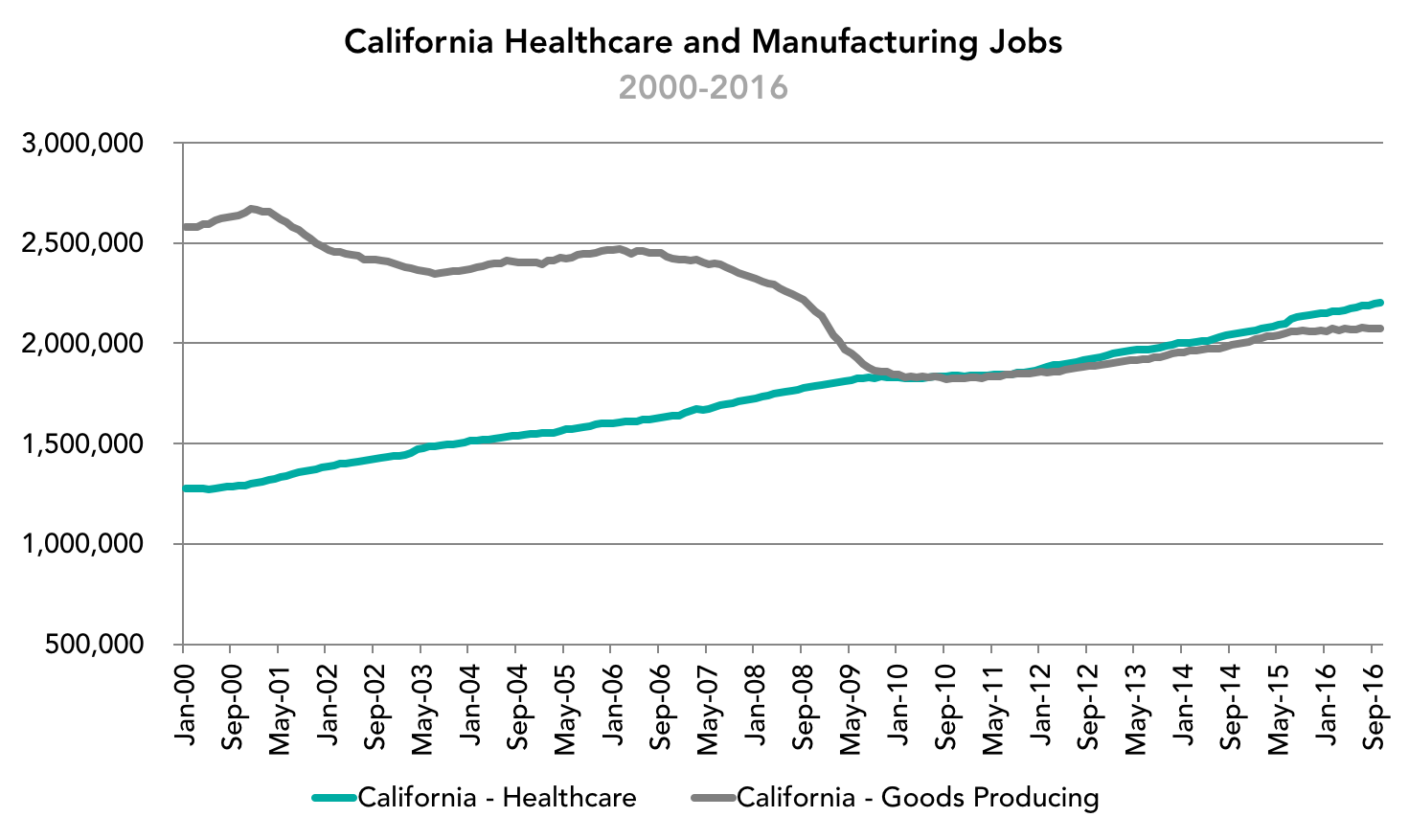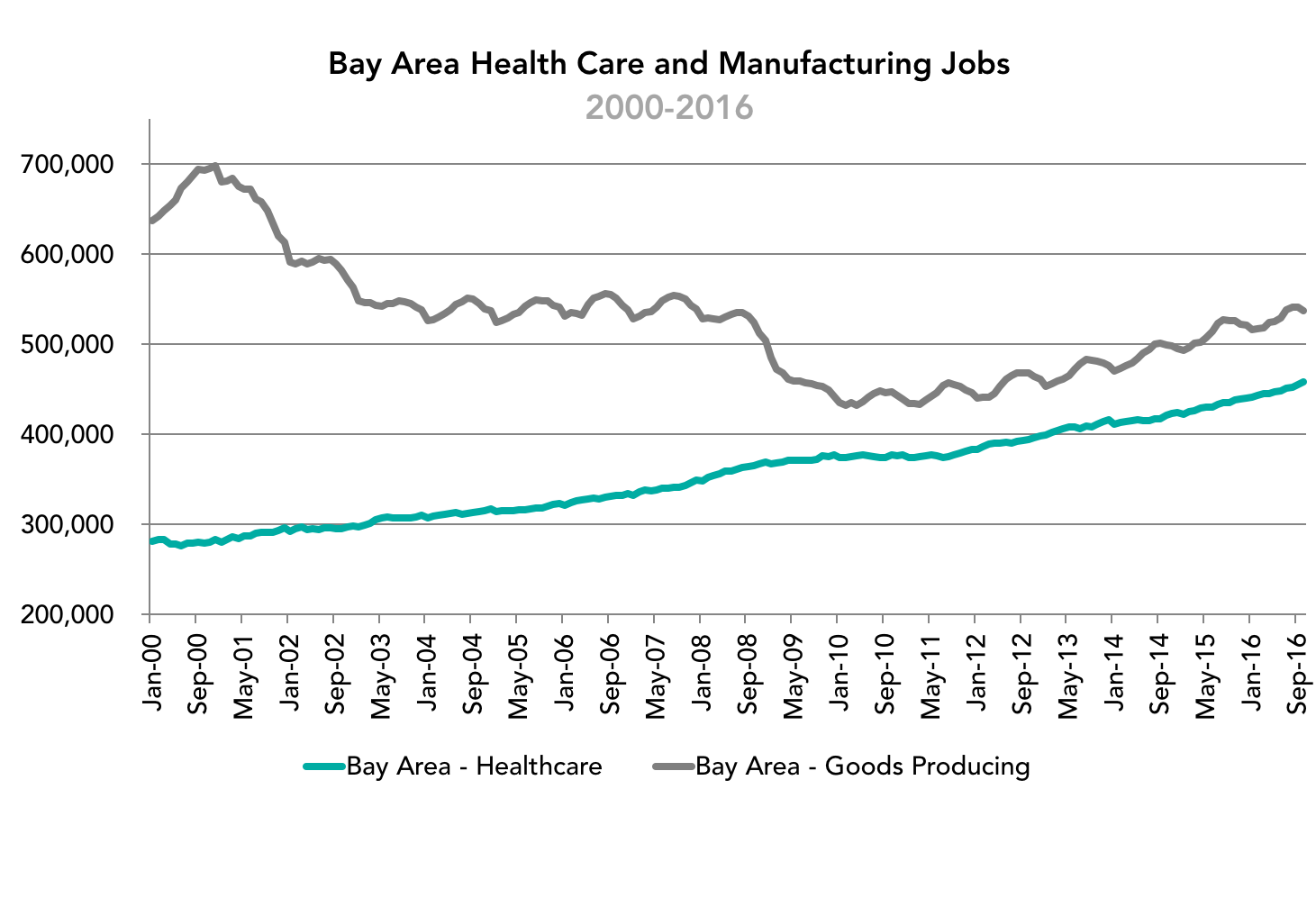
The presidential election focused on the disappearance of manufacturing jobs in the United States as well as the move to repeal the Affordable Care Act, which if it does nothing else, will dramatically decrease the amount of money the federal government spends on healthcare. A deeper dive into the relevant economic data raises important questions about these priorities at least as it relates to job creation. The chart below shows the trend for California that mirrors the trend in the nation: As manufacturing jobs declined over several decades largely driven by automation, they were replaced by healthcare jobs that are substantially more difficult to automate or offshore. There is reason to believe, therefore, that pumping more money, resources and attention into manufacturing at the expense of healthcare may be – for whatever other virtues this strategy may hold – problematic from the standpoint of job creation.

The trend in the Bay Area mirrors the trend in California and highlights the other missing piece of the conversation. Though manufacturing jobs are far below their historic peaks in the mid-20th century, there has been a slow and steady rebound of manufacturing employment in the region over the course of the past 5+ years. This is indicative of the increasing strength of the domestic economy during this time, and the emergence of export-driven high value-added manufacturing clusters in the Bay Area and throughout the nation. Pretending that manufacturing jobs are still in freefall, therefore, may lead to a belief that more aggressive anti-trade measures could prop up this sector of the economy. They would be much more likely, however, to choke off this rebound and impact not only these jobs but an economy that is producing a greater value of manufactured goods than at any other time in history.
